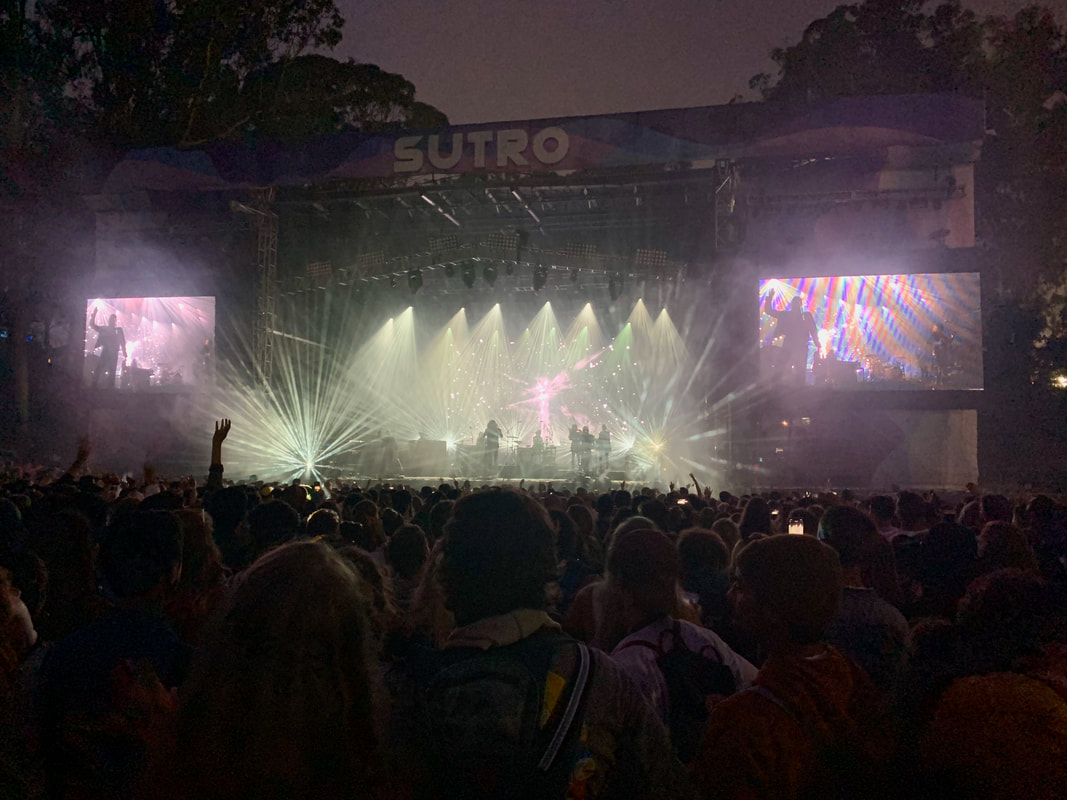|
by Lucas Fink pc creds: a Lucas sobbing in the middle of Work Song I get it; shit got crazy and you were nearly deafened when Tyler finally played Who Dat Boy. Now, having committed you and your friends’ hysteric screaming of “WHO HIM IS?!” to digital memory, that experience is re-visitable. Re-visiting is super cool; scrolling back through your camera roll to find that one video is fun and reveals the nuances of the moment that would’ve been lost to time. You can hear your phone’s speakers falter and hiccup as they attempt to regurgitate those smothering 808’s; you can remember the guy who elbowed you while moshing; you can, to an extent, re-experience the moment.
That's all well and good. What I take some issue with, though, is the commodification of memories that the digital realm encourages. I don’t like how social media transforms experiences into products, into mere things to be bought and sold. This phenomenon is specific to late capitalism and has been explained by many smart people - like Mark Fisher, Don DeLillo, and Jean Baudrillard. I’ll try to apply their analyses to those Snapchat stories of concerts you have to hurriedly tap through. Capitalism is really good at turning everything in the world into things that can be bought and sold and into spaces in which buying and selling can happen, and could not give two shits as to whether or not whatever it happens to be commodifying is a papaya or a human person. Deleuze and Guattari call this tendency deterritorialization, the process by which territories once considered sacred - like the human body - are stripped of that sanctity so the territory can be exploited to generate profit. Eventually, capital ran out of physical spaces and things to convert into markets and commodities, so it found new territory into which it could expand: the mind, our private subjectivities. How can it imperialize this new space? It must need nonphysical means by which to conquer nonphysical space. Cyberspace is the perfect tool for capital here, which is why communication technologies have accelerated in complexity at such blinding speeds. Thanks to the internet, your time and intellectual labor have been more thoroughly colonized and your thoughts, dreams, and memories have been newly colonized. This the “information economy”. The internet allows you to share your thoughts and experiences and, as those thoughts and experiences circulate through cyberspace in the form of Tweets and Tik Toks, they take on a life of their own and become commodities. All commodities are, as Guy Debord describes, invested with this spectacular nature, which is to say they try to convince us they’re way more awesome and cool and interesting than they actually are. Once you actually attain, say, the Yerba Mate, it is instantly “impoverished”, losing the spectacular aura and becoming just another canned energy drink dressed up in hip, socially conscious imagery. How exactly, then, do Tik Toks and Snapchat stories operate as spectacular commodities? What are Snap stories selling? They sell you, the idea of you as a hip, indie, cool, cultured, fun-having person that goes to Tyler, the Creator concerts. They also sell the experience of a Tyler, the Creator concert, and of concerts in general. Snap stories convert your experiences into things sold to others as affirmations of your coolness and into advertisements for those experiences. Thinkers like Baudrillard argue that all of culture is like this now, and as a result there are no real experiences, or real anything, anymore. Reality has been totally subordinated to the hyperreal, to simulacra that live independently of their ostensible referents. We care more about the Snapchats than whatever the Snapchats are of/whatever they represent; we care more about making a good Tik Tok than going to the concert and having fun. As a result, Snapchats have become simulacra, or representations that don’t really represent any reality. A beautiful example of the above is in Don DeLillo’s AMAZING book White Noise. In it, the protagonist Jack and his friend Murrary drive past a billboard advertising “The Most Photographed Barn in the World”. Jack and Murray find the barn-which is just a garden variety barn-and, observing as all the tourists frantically snap pictures, Murray remarks “Nobody sees the barn.” How fucking PROFOUND is that? Just as nobody cares about the actual Tyler concert, nobody cares about the barn. The actual barn is dilapidated and boring, and the actual Tyler concert was a stressful, sweaty, smelly, painful mess and after Glitter someone threw up on you. Instead, we elevate the barn to mythic levels of importance by photographing it; as Murray elaborates, “Each photo taken contributes to the aura.” The aura of the hip music scene is similarly bolstered by Snapchats of the Tyler concert, which are beautiful and perfect and only reveal what you want them to. I’m in no way saying concerts aren’t fun; they’re incredibly fun and I miss them intensely and I was just exaggerating the barn-concert analogy. I’m also very much guilty of techno-addiction and as a result struggle greatly with “being in the moment”. Instead of using the concert as an opportunity to fashion a digital fantasy thereof, though, we should just take a couple of pictures and then be there, amongst the sweat, vomit, and everything else. At the end of the Fyre Festival documentary on Netflix, an interviewee notes that a company is charging people to sit in a luxury jet parked on a tarmac and take selfies, and that the company is successful. Baudrillard came up with all the “hyperreal simulacra” stuff in the 1970s, and DeLillo wrote White Noise in the 1980s. They fucking time-travelled.
0 Comments
Leave a Reply. |
Archives
March 2024
Writers
All
|
